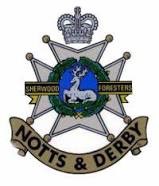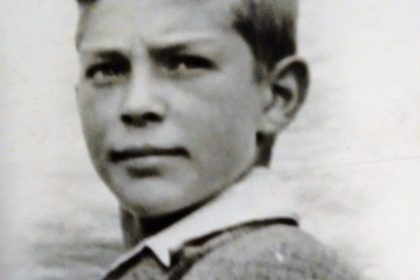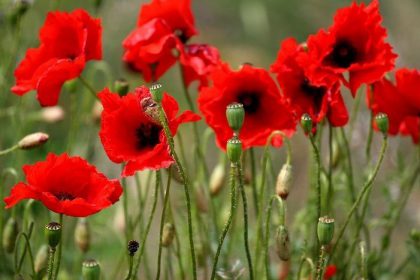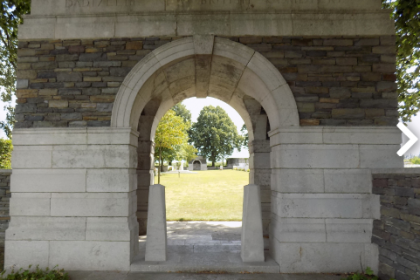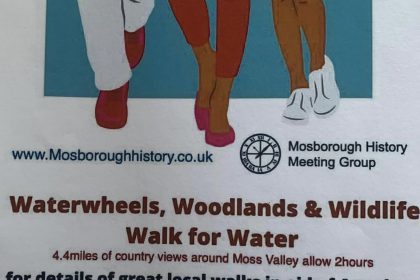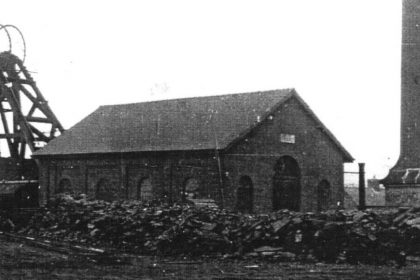The Alma Inn at 78 South Street, Mosborough, shares its name with countless other pubs and inns in the local area in commemoration of the Battle of the Alma which took place on 20th September 1854; commonly regarded as the first battle of the Crimean War (1853-1856). A notice board outside the front door of the building describes the event:
The Alma
The battle of the Alma took place during the
Crimean War on 20th September 1854.
The Russian army under prince Menshikoff
was drawn up on the south bank of the Alma river
The British under Lord Raglan crossed the river
and attacked the heights and after a brief
but fierce fight put the Russians to flight.
This was the first battle of the war, soon to be
followed by victories at Inkerman and Sevastopol
and by the magnificent charge of the light brigade
at Balaclava.
Doubtless, it was this event that inspired the inn’s first landlord, Isaac Plant (1828-1902), to rename his beerhouse, the Alma Inn. Isaac was born in 1828, the son of another Isaac (1802-1882), a coal miner, of Manor Wood Colliery, in Sheffield Park. He married in 1851, Mary (1832-1892), the eldest daughter of William Lomas, a journeyman sickle maker, of West Street, Mosborough.
Like his father, Isaac was also a coal miner, employed at the Silkstone Main Colliery of Messrs R. and J. Swallow at Mosborough Moor, which had opened in 1847[1]. He, along with his brothers, George and Septimus, were fortunate to escape from a disaster at the colliery in 1859, when a serious underground fire took the lives of four of the coalminers there[2].
Isaac and Mary spent the first years of their marriage at the Mosborough home of Mary’s grandfather, John Cowley (1770-1856) of West Street, a sickle manufacturer, and it was here that the couple’s first child, John, was born in February 1851. The 1851 Census describes Cowley as a Proprietor of Land and Houses, which included the British Oak public house on Moor Road, a substantial house that he had built for himself around 1820, but later leased[3], together with various properties he had acquired at the sale of the Crown estates of Eckington Manor in 1828[4]. It is quite possible that it was Cowley who encouraged and maybe assisted Isaac Plant to secure the house on South Street, which was later to become The Alma Inn. The couple probably moved there after John Cowley’s death in 1856, two years after the Battle of the Alma.
The building today looks very different from how it would have looked when Isaac Plant and his family took up residence. The CAMRA website whatpub.com[5] suggests that it was built in 1870, although it is clear that the present frontage abuts a much earlier building to the north, at right angles to the later “extension” (with what appears to be a kneelered gable on its western elevation). In fact, the extension may be much later than 1870, as it is not recorded convincingly on O.S. maps until 1899.
As to the licensing of beer houses, the requirements had been much relaxed by the Beerhouse Act of 1830, which enabled any rate-payer to brew and sell beer on payment of a licence costing two guineas. The purpose of the Act was to encourage the drinking of beer instead of spirits such as gin, the consumption of which had become widespread and was believed to be detrimental to the working class. It seems likely that Isaac opened his beerhouse under these provisions from around 1857 until 1860 when he applied to the Eckington magistrates for a full victualler’s licence.
His application was opposed by John Galley, whose wife, Emma, held the licence for the Duke William Inn, a short distance away in Duke Street. His application was refused[6], but presumably, it was granted shortly afterwards, for the Derbyshire Times and Chesterfield Herald reported that a Celery Show had been held “at the house of Mr. Isaac Plant, the Alma Inn, Mosborough” in October 1861[7].
The licence application appears to have marked the prelude to a feud between Isaac and John Galley, for in 1869 Galley, who still had an interest in the Duke William, brought a case at the Eckington Police Court charging Isaac with permitting gambling on his premises. He had visited the Alma and had seen Fusty Fidler, Luke Staniforth and others playing dominoes, and his wife had lent Staniforth 10s. Isaac’s solicitor, Mr. Whiteman, claimed that the case was one of spite to prevent the accused from getting a licence and, after hearing evidence from those who were present, it was dismissed[8].
Isaac’s application for a renewal of his licence in September 1869 was granted, not without further intervention from the Duke William Inn in the person of William Rogers, the new landlord[9]. At the same hearing, a licence was granted to Isaac’s younger brother, George Plant (1831-1910), for the Brown Cow at Mosborough[10].
A rather interesting dispute arose at Chesterfield County Court in 1872. Thomas Glossop Kirkby, who was the landlord of the Blue Bell Inn, had bought some copyhold land beside Steward’s Croft in Mosborough from his grandfather’s estate in 1858, and there was a dispute about the ownership of a ditch running alongside it. The neighbouring land belonged to John Galley and the Exchange Brewery, Sheffield[11]. Steward’s Croft was owned by John Galley when the dispute first arose in 1867 and the Exchange Brewery had excavated the ditch when it came into their possession, trespassing on Thomas Kirkby’s land in the process. Among those giving evidence in support of Thomas Kirkby’s action were Mark Hodgson and Isaac Plant, along with Thomas Kirkby’s father, John Kirkby. William Rogers, landlord of the Duke William, and John Rose, farmer, gave evidence for the Brewery. Mark Hodgson had owned the land between 1830 and 1845. He had sold it to John Cowley, who in turn had sold it to John Galley. Isaac Plant said that he once owned part of Steward’s Croft, which he had sold to Galley, and this would seem to confirm the suspicion that John Cowley had somehow been instrumental in Isaac’s move to the Alma Inn.
One amusing aspect to the case was the evidence given by Nathan Staton, hook grinder, then aged 75, and said to be “the oldest inhabitant for the defence”. He claimed that his grandfather was a tenant of the land and that he (Nathan) had gardened it. In his summing up, the Judge said, rather disparagingly, that Nathan was a fine specimen of Charles Dicken’s “oldest inhabitant”, who was chiefly remarkable for knowing nothing (laughter in the court)[12].
The national Return of Owners of Land, compiled in 1873, records that Isaac Plant owned 1 acre and eighteen perches of land in Mosborough with an estimated gross rental value of £16 3s., perhaps representing the site of the Alma Inn and its associated grounds[13].
Over the first twenty-five years of their marriage, Isaac and Mary had a very large family of fifteen children:
- John (b. 1851), a coal miner, unmarried, lived at Mosborough;
- Leonard (b. and d. 1853);
- Rose (1854-1910), married James Albert Clarke (1859-1929) of Mosborough, coal miner, and moved to Kimberworth;
- Sarah Ann (1856-1932), married Hugh Thomas Redfearn Gould (1859-1890) of Chelmorton, and lived in Mosborough;
- Mary Ellen (1857-1933), a dressmaker, unmarried, lived at Mosborough;
- Clara Jane (1860-1880), unmarried, lived at the Alma Inn until her death;
- Emma (1861-1884), a housekeeper, unmarried, lived at Mosborough;
- Isaac (1864-1936), coal miner, unmarried, lived at Mosborough;
- Lucy (1865-1909), married Thomas Green (1860-1927) of Mosborough, coal miner, and lived in Mosborough;
- Alice (1868-1911), married George Parkin (1858-c.1900) of Mansfield, coal miner, lived in Mosborough, 8 children;
- William (1869-1948), a coal miner, married Mary Ann Brunt (b. 1865) of Mosborough, widow, lived at Beighton, 4 stepchildren;
- Joseph (1871-1943), a coal miner, married Annie Elizabeth Truswell (b. 1867) of Mosborough, lived at Mosborough and Kiveton, 5 children;
- Thomas (b. and d. 1871);
- Florence Edith (1873-1947), married William Ellis (1872-1945) of Gamston, Nottinghamshire, farmworker, lived at Greasbrough, Rotherham, 5 children;
- George (1877-1927), a coal miner, married Charlotte Anne Bailey (1877-1927) of Attercliffe, lived at Mosborough and then Shirebrook, 6 children.
For most of his working life, Isaac combined the dual occupations of the landlord of the Alma Inn, with coal mining, beginning first at Messrs. J. & F. Swallow’s Silkstone Main Colliery at Mosborough Moor, probably with his father. It was here that he had two picks stolen by a fellow miner, George Pearson, in 1854[14]. Twenty years later, he was working at Renishaw Park Colliery, when he charged Mark Staniforth and George Froggatt with the theft of a shovel, although the case was not proved[15]. In 1883, he and Thomas Elcock, Henry Staniforth, William Arnison and James Wade were fined for failing to place supports at regular distances while working underground at Renishaw Park[16].
By 1892, Isaac had moved once again, this time to the Plumley Colliery of Messrs. J. & G. Wells, when he and Joseph Oliver, Jabez Owen, John Cutts and Luke Staniforth were summoned by the company for absenting themselves from work[17]. The following month, Isaac’s wife, Mary, died, aged 62.
As far as the Alma Inn is concerned, Isaac appears to have kept a reputable house, although he was fined 40s. in 1876 for serving beer outside permitted hours[18]. In 1884, he was cleared of a charge of selling intoxicating liquors outside these hours when it was claimed that Emma Finney was seen purchasing the products[19]. A little more serious was an incident which occurred in March 1887, when Herbert Turner, farmer, was found guilty at Eckington Petty Sessions of being drunk at the Alma Inn. The Turners were a family of straw rope makers[20]. Herbert was living at the farm of his son, Mark, at 36 South Street, and had been drinking heavily before visiting the Alma Inn. Herbert and a man named Alton had been fighting. Also found guilty of refusing to quit the premises at the time were Herbert’s other son George, farm labourer, and his married daughter, Ann Rose. They claimed to be there on the pretext of fetching their father away[21].
At the same hearing, Isaac Plant, the landlord, was charged with permitting drunkenness on his licenced premises. Three witnesses were called in Isaac’s defence, but he was fined £1 with costs. Taking into account that he had kept the house for nearly thirty years and this was his first offence, the magistrates concluded that his licence should not be endorsed[22]. Some days later, it appears that Herbert Turner was in court once again after using threatening language to his son-in-law, Walter Rose, outside the Alma Inn[23].
In August 1893 at Eckington, Isaac married Charlotte (1844-1906), the widow of Henry Bargh of West Wells, coal miner. He died at the Alma Inn on 23 August 1902, aged 74 years[24].
The Alma’s second landlord was Aaron Wells (1846-1928). Aaron was baptised at Eckington on 27th September 1846, the son of William Wells (1819-1892) of Moor Hole, Mosborough, coal miner, and his wife, Mary Ann (1819-1895). He began his career as a coal miner, and it was not until after the birth of his children that he moved into the licenced trade, commencing at the Vine Tavern, Mosborough around 1881[25].
Aaron and his wife, Ann, had three children:
- William (1868-1943), a coal miner and butcher, married Charlotte (b. 1874), of South Leverton, Nottinghamshire, lived at the Railway Inn, Beighton, and retired to Worksop;
- Fred (b. 1871), a railway wagon maker, married Eliza Ann Fisher (1878-1951) of Troway, lived in Mosborough, 2 children;
- Annie (1874-1917), unmarried, died at the Alma Inn.
The family moved to the Royal Oak in High Street around 1894, before Aaron became the licensee of the Alma Inn after the death of Isaac Plant in 1902. It was probably around this time that the brewery company Duncan Gilmour & Co. Ltd. of Nursery Street, Sheffield acquired the premises from Isaac Plant’s estate. Aaron appears to have been the first landlord to introduce a new range of events and activities at the Alma, including a shooting match on the grounds in 1903[26] and a successful fishing club in 1904[27].
The Alma retained its status as a reputable house, although Aaron Wells did receive his first complaint after some 32 years in the trade when Fabian Ashley, a long-time friend of Aaron’s, was found guilty by magistrates of being drunk on the premises in February 1913[28]. In view of his outstanding good record, the magistrates declined to fine Aaron but did require him to pay the costs of the prosecution.
But life was not without its tragedies. Aaron’s wife, Ann, had died a few years previously in around 1910, and his only daughter, Annie, died in October 1917 after a long debilitating illness[29]. It seems likely that he took on a domestic servant to assist him in 1911[30]. It is not clear how much longer Aaron continued in business before retirement. He was still resident at the Alma in 1925, at the age of 79, according to Kelly’s Directory of that year[31].
Sometime later, he moved to live with his nephew and niece at Holly Cottage in Barlborough, and tragically it was here, in an outhouse, that his body was discovered with his throat cut in December 1928. He had been unwell and very depressed. The Coroner recorded a verdict of “Suicide while of unsound mind”[32]. He was 82.
From this point forward, records of the Alma’s history become, perversely, much vaguer. There are fewer newspaper reports and a growing emphasis on privacy and confidentiality in succeeding years.
It is believed that the next tenants of the Alma Inn were Thomas Richard Snowden (1870-1950) and his wife Clara Ann (1870-1956). Thomas was born at Walkeringham, near Gainsborough, (probably at the Old Brickyard), on 8th July 1870, the youngest son of Charles Snowden (1824-1871), brickyard labourer, and his wife, Mary Ann (1827-1888). He married, in January 1889, Clara Ann, the only daughter of Alfred William Rollinson of Albert Road, East Retford, tailor.
The couple set up home at Throapham, near Rotherham, where Thomas had secured a post as Groom for the colliery owner and farmer, Samuel Skinner, of Throapham Manor. They had nine children:
- Catherine Ann (1890-1947); married John Taylor Barnes (1892-1962), of Rawtenstall (formerly Newchurch), Lancashire, slipper hand, lived in Mosborough before emigrating to Christchurch, New Zealand around 1924, 4 children;
- Charles Alfred (1891-1974), a colliery boiler maker’s assistant and later fitter at a steelworks, married Gladys Marples (b. 1894) of Chesterfield, lived in Mosborough, 2 children;
- Agnes Maria (1893-1920), married John Thomas Banbridge (1891-1964) of Haslingden, Lancashire, maltster’s labourer, 1 child;
- John William (1896-1915), a colliery boiler maker’s assistant and later private, Royal Marine Light Infantry, H.M.S “Plymouth”, missing in action 4 March 1915 at Gallipoli;
- Harriet Rollinson (1899-1924), married James W. Taylor (1892-1956) of Whittington, colliery banksman, and lived in Mosborough, 3 children;
- Frances (b. 1901);
- Trevor Rollinson (1901-1978), served with the Royal Marines Infantry Plymouth Division, H.M.S. “Impregnable”, married Amy Rollinson (1903-1973) of Consett, County Durham, lived in North Wingfield, where he was a colliery fitter, 3 children;
- Arnold Lawrence (1909-1999), maintenance fitter, chargehand. at a tarmacadam works, married Eva Pearson (1907-1992) of Eckington, picture house cashier, lived at Eckington;
- Reginald Palmer (1910-1998), coal miner and maintenance fitter, motorcycle messenger with Messrs. J.&G. Wells A.R.P. Service married Hannah Jones (1909-1995) of Mansfield Woodhouse and lived in Mosborough, 3 children.
It was probably around 1893 that the family moved to Eckington, when Thomas became Groom and Coachman to George Stevenson, building contractor and farmer, of the Manor House, Church Street, Eckington. He gave evidence for the prosecution in the trial at Eckington Police Court of Jeremiah Buckley, a butcher of Mosborough, who had been summoned in August 1906 for “furiously driving a horse and cart” at Eckington. Thomas estimated the speed of the horse at 13 miles an hour![33]
It seems likely that when George Stevenson retired, Thomas moved his family to 78 South Street, Mosborough. He is certainly recorded as living there in the 1911 Census when he is described as a colliery labourer (above ground). The Census also records Aaron Wells at 76 South Street with his housemaid, Alice Newton. It is possible to surmise that the Alma Inn was, in fact, two houses in 1911, occupied by 2 different families. Both are recorded in their respective Census returns as living in a house of 9 rooms, although the 9 is crossed through in Thomas Snowden’s return and replaced with 6, suggesting some uncertainty as to a possible merger[34].
His youngest son, Reginald Palmer Snowden was born there in 1910. One of his sons, John William, who was training to be a colliery boilermaker, enlisted for the Royal Marine Light Infantry shortly after the outbreak of the Great War but was tragically declared missing, presumed dead, at Gallipoli in March 1915, aged 18.
Whatever the living arrangements were between the two families, there can be no doubt that Thomas Snowden and Aaron Wells would have been well acquainted, placing Thomas in a strong position to take over the management of the Alma when Aaron Wells retired after 1925.
Little is recorded about the Alma Inn after 1928. Thomas Snowden left there sometime before 1939 and is recorded living at Rotherham Road in Eckington with his wife, Clara (who by then was incapacitated), and their son, Arnold Lawrence Snowden. Thomas, who in 1950 was living at “Bankside” on Rotherham Road, collapsed and died while out shopping in the store of Mrs. D. Axtell on Station Road, Halfway in June of that year[35]. Clara died in 1956.
The brewing company of Duncan Gilmour & Co. Ltd. and its chain of around 350 pubs was acquired by Joshua Tetley & Son Ltd. in 1954, and the Alma Inn was probably included in this acquisition. In 1960, Joshua Tetley & Son Ltd. merged with Walker Cain Ltd. to become Tetley Walker Ltd., and a year later a further merger with Ind Coupe Ltd. and Ansells Brewery Ltd. led to the creation of the Allied Breweries conglomerate.
Based upon the information contained in postings to the Mosborough Local History Group Facebook page, it appears that the Alma was managed at one time by Leonard and Winnie Hargreaves. Leonard (1906-1980) was born on 7th March 1906, the son of Herbert Hargreaves (1871-1948) of Kimberworth, gun and armourer fitter, and his wife Ruth (nee Taylor, 1875-1958). He was originally a professional footballer, playing as a winger for Sunderland United between 1927 and 1929[36], and later with Sheffield Wednesday, Doncaster and Luton, before joining Peterborough United in 1934[37]. He scored the first goal for the newly-founded Peterborough United in the opening match of the season against Gainsborough Trinity in 1934. Len married Winifred (1907-1992), the eldest daughter of Arthur Housam (1877-1955) of Sunderland, foreman iron founder, at Sunderland in 1931 He gave up his football career sometime before 1939, when, like his father, he became an Engineer’s fitter working on torpedos in Peterborough. It’s possible that he and Winnie (known as ‘Jamjar’ to her family[38]) moved to the Alma Inn shortly afterwards. The couple had one child:
- Freda Doreen (1934-2018), married Kenneth John McKay (1929-1988) of Sheffield, in 1952 at Sheffield. Their only son, Ian John McKay (1953-1982) was a platoon sergeant with the Parachute Regiment and was killed during the Battle of Mount Longdon in the Falklands War. He was posthumously awarded the Victoria Cross[39].
Len and Winnie retired around 1971 and the Alma was taken over by Les and Peggy Wilby, who refurbished the interior in 1972. The event was celebrated by a visit from the Yorkshire and England fast bowler, Fred Truman. Les was an active member and coach for the Sheffield United Harriers. The couple had previously managed the Vine Inn in Mosborough between 1957 and 1965.
Lesley “Les” Wilby (1923-2005) was born on 8th February 1923, the son of Ernest Wilby (b. 1891) of 54 Ouse Road, Darnall, boiler fireman, and his wife Nellie (nee Holland, 1897-1970). In 1944, at Sheffield, he married Iris Doreen “Peggy” (1922-2007), the daughter of Arthur Hill of Scunthorpe. The couple first settled at Intake in Sheffield, before taking over the Blue Bell at Duke Street in Mosborough in 1955. In 1957, they took the Vine Tavern at School Street in Mosborough, before finally moving to Moor Crescent in 1965. Around this time, Les was working for Ind Coupe, Ltd., then part of Allied Breweries and owners of the Alma Inn. The Alma had become quite run down by 1971 and was on the point of being closed. Knowing of Les’s previous experience as a landlord of two pubs in the village, the brewery asked him to take it over and turn it around. Les and Peggy moved into the Alma later that year. They had two children:
- David L. (b. 1948), married Frances Conway in 1968 at Chesterfield and moved to Wales.
- Jean M. (b. 1954), married Reginald Garry S. Snowden (b. 1953) at St. Marks, Mosborough in 1973, bringing together two families of Alma Inn landlords (Garry being a descendent of Thomas Richard Snowden, the landlord in around 1925).
When Les and Peggy retired around 1975, they moved to Swallownest. Les died there in 2005, and Peggy in 2007[40].
There is a reference to Jim and Jean McKevitt (previously of the Stonehouse in Sheffield), who took over after Les and Peggy left, but little is known about them. Today, the Alma Inn is managed by Philip and Sandra Godfrey-Cooke who took up the tenancy in 1999. Philip reports that the Alma Inn was owned by Wards Brewery and later by Punch Pubs & Co. when Wards closed in 1999. An original Gilmour’s sign painted on the gable was uncovered seven or eight years ago whilst external rendering works were in progress. Although a suggestion that the sign might be restored was rejected, it is now covered by the sign that is currently in place.
Click here for Photographs of The Alma through the years. Added by Linda Taylor nee Staton
Click here for Newspaper Snippets of the The Alma. Added by Linda Taylor nee Staton
[1]Sheffield Independent, 24 January 1854.
[2]Sheffield Independent, 10 September 1859.
[3]Sheffield Independent, 9 December 1820.
[4] Foster, G., Reminiscences of Mosborough, 1866.
[5]https://whatpub.com/pubs/SHF/531/alma-sheffield (accessed 23 March 2020)
[6]Derbyshire Times and Chesterfield Herald, 1 September 1860.
[7]Derbyshire Times and Chesterfield Herald, 12 October 1861. This was the first recorded reference to the name “Alma Inn”.
[8]Derbyshire Times and Chesterfield Herald, 12 June 1869.
[9]Sheffield Daily Telegraph, 7 September 1869.
[10]Derbyshire Courier, 11 September 1869.
[11] John Galley had sold the Duke William Inn to the Exchange Brewery some years earlier.
[12]Sheffield Daily Telegraph, 25 January 1872.
[13]Return of Owners of Land, 1873, Vol. 1, Local Government Board, H.M.S.O., 1875.
[14]Sheffield Independent, 21 January 1854.
[15]Sheffield Independent, 23 December 1874.
[16]Sheffield Independent, 4 September 1883.
[17]Sheffield Independent, 8 November 1892.
[18]Sheffield Daily Telegraph, 8 August 1876.
[19]Derbyshire Courier, 24 May 1884.
[20] Straw rope was used widely for domestic and agricultural purposes, principally for thatching and for securing straw into bundles or “bottles” for easier handling. Herbert Turner was first recorded as a Straw Rope Maker, along with his 15-year-old son, Mark, in the Census of 1871, whilst living at Ridgeway. Mark was described as a Straw Rope Spinner in the Census of 1881, when the family lived at Bridge End, Ford. Herbert appears once more as a Straw Rope Maker in 1891 when living at 36 South Street, Mosborough, along with his 17-year-old son, William Arthur. Both Mark and William Arthur were still making straw ropes in 1911 when they were then living once more at Ford. Both men had turned to coal mining as their main occupation by 1939.
[21]Derbyshire Courier, 5 March 1887.
[22]Derbyshire Courier, 1 March 1887.
[23]Derbyshire Courier, 19 March 1887.
[24]Derbyshire Courier, 30 August 1902.
[25]Sheffield Independent, 8 August 1881.
[26]Derbyshire Times and Chesterfield Herald, 14 February 1903.
[27]Derbyshire Times and Chesterfield Herald, 10 September 1904.
[28]Derbyshire Courier, 25 February 1913.
[29]Derbyshire Courier, 4 November 1917.
[30]Derbyshire Times and Chesterfield Herald, 15 March 1911.
[31] Kelly’s Directories Ltd., Kelly’s Directory of the Counties of Derby, Nottingham, Leicester and Rutland, 1925, p. 268
[32]Sheffield Independent, 17 December 1928.
[33]Derbyshire Courier, 18 August 1906
[34] 1911 was the first Census year in which the number of rooms in each property was recorded, so it is not possible to make comparisons with earlier returns.
[35]Derbyshire Times and Chesterfield Herald, 23 June 1950.
[36] Dykes, G., Lamming, D., All the Lads, A complete Who’s Who of Sunderland AFC, 2000.
[37]Up the Posh, Peterborough United Database, https://www.uptheposh.com//people/7753/ (accessed 19th April 2020).
[38] Cooksey, J., Falklands Hero: Ian McKay, The Last VC of the 20th Century, 2007.
[39]The Living History of the Parachute Regiment, https://www.paradata.org.uk/people/ian-j-mckay (accessed 20th April 2020).
[40] Les and Peggy’s story is largely based upon information kindly supplied by Jean and Garry Snowden.


